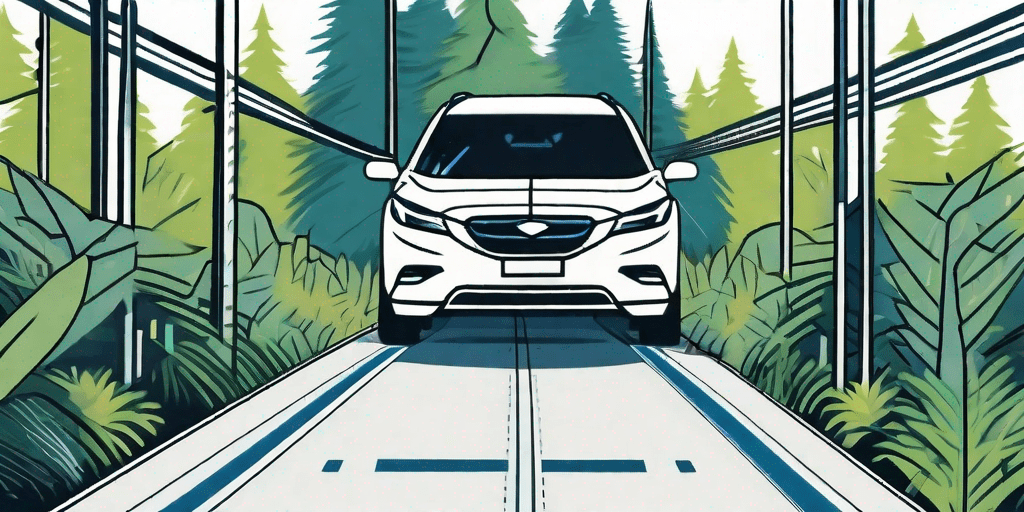The Woodlands ADAS camera calibration plays a crucial role in ensuring the proper functioning of advanced driver assistance systems (ADAS) in vehicles. Understanding the importance of ADAS camera calibration is essential for every vehicle owner, as it directly impacts driving safety and overall vehicle performance.
Understanding ADAS Camera Calibration
ADAS camera calibration is the process of adjusting and resetting the cameras in a vehicle’s ADAS system to ensure accurate and reliable operation. This calibration is necessary because these cameras are responsible for providing crucial data to the ADAS system, such as lane departure warnings, adaptive cruise control, and collision avoidance. Without proper calibration, the system’s accuracy and effectiveness may be compromised, leading to potential safety risks.
The Importance of ADAS Camera Calibration
The correct calibration of ADAS cameras is vital for ensuring accurate object detection, distance measurements, and path prediction. If the cameras are not aligned correctly, they may not accurately detect objects or provide incorrect information to the ADAS system. This misalignment can result in false alarms, improper warnings, and even failure to detect hazards, greatly reducing the effectiveness of ADAS features.
The Process of ADAS Camera Calibration
The process of ADAS camera calibration involves using specialized equipment to adjust the camera positions, angles, and settings to match the manufacturer’s specifications. This calibration is typically performed by trained technicians using advanced tools and software specifically designed for ADAS calibration.
During calibration, the vehicle is positioned precisely, and the cameras are aligned to ensure their accuracy. The calibration process may include adjusting the camera mounting brackets, updating the camera firmware, calibrating the lens focus, and verifying the system’s alignment. Once the calibration is complete, the ADAS system can accurately interpret the camera inputs and provide reliable safety features.
The Role of ADAS in Vehicle Safety
ADAS plays a significant role in improving driving safety by utilizing advanced technologies to assist drivers and reduce the risk of accidents. These systems are designed to provide warnings, assist in maintaining safe driving distances, and even intervene to prevent collisions when necessary.
How ADAS Improves Driving Safety
ADAS systems utilize various technologies, including cameras, sensors, and radar, to monitor the vehicle’s surroundings, detect potential hazards, and alert the driver. For example, lane departure warning systems use cameras to detect lane markings and provide audible or visual alerts if the vehicle drifts out of its lane unintentionally.
Another essential ADAS feature is adaptive cruise control, which uses radar or sensors to automatically adjust the vehicle’s speed to maintain a safe distance from the vehicle in front. This technology ensures that the driver maintains a safe following distance and reduces the risk of rear-end collisions.
The Different Types of ADAS
ADAS encompasses various features and technologies that are designed to enhance vehicle safety. Some common types of ADAS include:
- Forward collision warning
- Automatic emergency braking
- Pedestrian detection
- Rearview cameras
- Blind-spot detection
- Parking assist
Each of these features uses different types of sensors, cameras, and algorithms to provide specific safety functions and improve the overall driving experience.
ADAS Camera Calibration in The Woodlands
The Woodlands, a vibrant community known for its commitment to safety, offers a range of local services for ADAS camera calibration. These services cater to vehicle owners who prioritize maintaining the accuracy and reliability of their ADAS systems.
Local Services for ADAS Camera Calibration
The Woodlands boasts skilled technicians who specialize in ADAS camera calibration. These professionals have the expertise and state-of-the-art equipment necessary to perform precise calibration procedures for various vehicle makes and models.
What to Expect from a Calibration Service
When visiting a local ADAS calibration service in The Woodlands, vehicle owners can expect a comprehensive and thorough calibration process. The technicians will carefully assess the vehicle’s ADAS system, perform necessary adjustments, and ensure that the cameras are correctly aligned and calibrated to the manufacturer’s specifications.
The calibration process typically takes a reasonable amount of time, depending on the complexity of the system and the specific needs of the vehicle. Vehicle owners can rest assured that their ADAS systems will be accurately calibrated to maintain optimal performance and safety.
Maintaining Your ADAS System
ADAS camera calibration is not a one-time process; it requires regular maintenance and periodic recalibration to ensure proper functioning. By following specific maintenance practices, vehicle owners can prolong the lifespan of their ADAS systems and ensure the continued safety benefits they provide.
Regular Checks and Calibration
It is recommended to have your ADAS system checked and calibrated annually or whenever the vehicle undergoes significant repairs or modifications. By scheduling regular calibration appointments, vehicle owners can address any potential misalignment or recalibration needs promptly.
Troubleshooting Common ADAS Issues
In some instances, ADAS systems may experience issues that can affect their performance. These issues can include misaligned cameras, sensor malfunctions, or software glitches. When faced with such problems, it is crucial to consult with a qualified technician who can diagnose and resolve the issues effectively.
By regularly checking the system’s performance, addressing potential issues promptly, and ensuring accurate calibration, vehicle owners can maintain the reliability and effectiveness of their ADAS systems.
The Future of ADAS Technology
As technology continues to evolve, so does the field of ADAS. Advances in ADAS technology are continually being made to enhance vehicle safety, improve driver assistance features, and pave the way for autonomous driving.
Advances in ADAS Technology
Advancements in sensor technology, artificial intelligence, and vehicle connectivity are driving the development of more sophisticated and highly accurate ADAS systems. These advancements aim to provide better detection capabilities, faster response times, and more advanced safety features.
The Impact of ADAS on the Automotive Industry
ADAS technology has had a significant impact on the automotive industry, influencing vehicle design, manufacturing, and consumer preferences. Increasingly, consumers prioritize vehicles equipped with advanced safety features, leading manufacturers to integrate ADAS technology into their models.
Moreover, the adoption of ADAS technology has the potential to reduce the number of accidents, improve road safety, and lower insurance costs. As ADAS systems become more advanced and widely available, they have the potential to revolutionize the way we experience transportation.
In conclusion, ADAS camera calibration in The Woodlands is an essential aspect of maintaining the safety and performance of ADAS systems. Understanding the importance of ADAS camera calibration, the process involved, and the various services available in The Woodlands ensures that vehicle owners can make informed decisions to prioritize the accuracy and reliability of their ADAS systems. Regular checks, troubleshooting common issues, and staying updated with advancements in ADAS technology are key to fully benefiting from these innovative safety features and embracing the future of driving.



